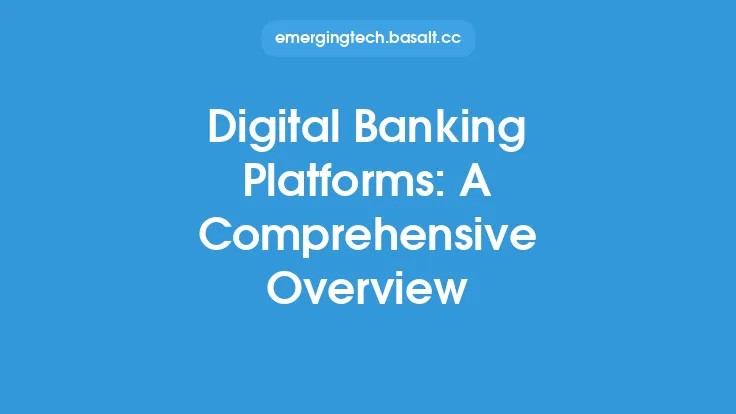Cloud computing has revolutionized the way organizations approach IT infrastructure, offering unparalleled flexibility, scalability, and cost-effectiveness. Among the various cloud deployment models, hybrid cloud architecture has emerged as a popular choice, allowing businesses to leverage the benefits of both public and private clouds. In this article, we will delve into the intricacies of hybrid cloud architecture, exploring its components, design principles, and technical considerations.
Introduction to Hybrid Cloud Architecture
Hybrid cloud architecture refers to the integration of public and private cloud services, enabling organizations to deploy workloads across multiple cloud environments. This approach allows businesses to take advantage of the scalability and cost-effectiveness of public clouds, while also maintaining control and security over sensitive data and applications in private clouds. Hybrid cloud architecture is designed to provide a seamless and flexible IT infrastructure, enabling organizations to respond quickly to changing business needs.
Components of Hybrid Cloud Architecture
A hybrid cloud architecture typically consists of several key components, including:
- Public Cloud: A public cloud service, such as Amazon Web Services (AWS), Microsoft Azure, or Google Cloud Platform (GCP), provides scalable and on-demand access to computing resources, storage, and applications.
- Private Cloud: A private cloud, either on-premises or hosted, offers a secure and dedicated environment for sensitive data and applications, providing control and customization.
- Hybrid Cloud Management: A hybrid cloud management platform, such as VMware vRealize or Microsoft System Center, enables organizations to manage and orchestrate resources across multiple cloud environments.
- Network Infrastructure: A robust network infrastructure, including firewalls, routers, and switches, ensures secure and reliable connectivity between public and private cloud environments.
- Security and Compliance: A comprehensive security and compliance framework, including identity and access management, encryption, and auditing, protects sensitive data and ensures regulatory compliance.
Design Principles for Hybrid Cloud Architecture
When designing a hybrid cloud architecture, several key principles should be considered:
- Scalability: The ability to scale resources up or down to meet changing business needs, ensuring optimal resource utilization and cost-effectiveness.
- Flexibility: The capacity to deploy workloads across multiple cloud environments, enabling organizations to choose the best platform for each application or service.
- Security: A robust security framework, including encryption, access controls, and monitoring, protects sensitive data and ensures regulatory compliance.
- Interoperability: Seamless integration and communication between public and private cloud environments, enabling organizations to leverage the strengths of each platform.
- Cost-Effectiveness: A cost-effective approach to IT infrastructure, minimizing capital expenditures and optimizing operational expenses.
Technical Considerations for Hybrid Cloud Architecture
Several technical considerations are crucial when implementing a hybrid cloud architecture:
- Cloud Interoperability: Ensuring seamless communication and data exchange between public and private cloud environments, using standards such as OpenStack or Cloud Foundry.
- Network Connectivity: Establishing secure and reliable network connectivity between cloud environments, using technologies such as VPNs or direct connect.
- Data Management: Implementing a comprehensive data management strategy, including data replication, backup, and recovery, to ensure data consistency and availability.
- Security and Compliance: Implementing a robust security and compliance framework, including identity and access management, encryption, and auditing, to protect sensitive data and ensure regulatory compliance.
- Monitoring and Management: Implementing a comprehensive monitoring and management platform, including tools such as Nagios or Splunk, to ensure real-time visibility and control over hybrid cloud resources.
Best Practices for Hybrid Cloud Architecture
To ensure a successful hybrid cloud architecture, several best practices should be followed:
- Assess Business Requirements: Carefully assess business requirements and workloads to determine the optimal cloud deployment model.
- Choose the Right Cloud Services: Select public and private cloud services that align with business needs and provide the required scalability, security, and cost-effectiveness.
- Implement a Comprehensive Security Framework: Implement a robust security framework, including identity and access management, encryption, and auditing, to protect sensitive data and ensure regulatory compliance.
- Monitor and Optimize: Continuously monitor and optimize hybrid cloud resources, using tools such as monitoring and management platforms, to ensure real-time visibility and control.
- Develop a Cloud-First Strategy: Develop a cloud-first strategy, prioritizing cloud-based services and applications, to ensure maximum flexibility and scalability.
Conclusion
Hybrid cloud architecture offers a powerful and flexible approach to IT infrastructure, enabling organizations to leverage the benefits of both public and private clouds. By understanding the components, design principles, and technical considerations of hybrid cloud architecture, businesses can create a seamless and scalable IT infrastructure, optimized for performance, security, and cost-effectiveness. As cloud computing continues to evolve, hybrid cloud architecture will play an increasingly important role in enabling organizations to respond quickly to changing business needs and stay ahead of the competition.





